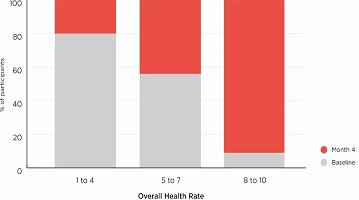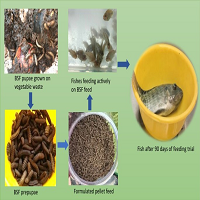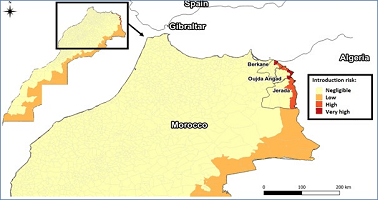When I was an adolescent in the 1960’s, I remember Sergeant Joe Friday of the popular television program Dragnet, discussing all the deficits of marijuana and arresting people either for using or potentially selling marijuana. I remember his immortal line “I judge weed by the company it keeps”. Moreover, the popular television show Cops, which aired until 2013, further reinforced these ideals.
As far back as 1982, the Surgeon General‘s warning on marijuana included short-term memory impairment, reproduction difficulties, and adverse effects in lung and immune system functioning.1 Moreover, additional side effects may include depression and anxiety,2 whereas potentially longer-term effects may include cough, wheezing, and breathing problems.3 Likewise, additional deleterious effects may include hallucinations4 and decreased IQ.5
However, as time has unfolded, individuals who have epilepsy,6 multiple sclerosis symptoms,7,8 cancer,9 or chronic pain,8 have benefitted from medical marijuana. Indeed, individuals with these severe maladies obtained some physical and psychological relief, albeit not a cure. Although, many of these positive effects are short-term, nevertheless, they provided an impetus for visualizing marijuana in a different manner. Therefore, because of its adverse symptomatic relieving effects, some of the stigma has been removed from marijuana. To this end, 28 states have legalized medical marijuana.10 Eight states (including my current home state of Nevada) have legalized the recreational use of marijuana.11
The legalization of marijuana from both medical and recreational aspects has spawned a plethora of questions, concerns, and research possibilities. For example, studies12 have suggested that states with legalized medicinal marijuana use will have higher rates of marijuana use than those states that have not legalized it. Moreover, medical marijuana states may also have higher odds of abuse and dependence. Yet, studies13,14 have found no significant differences in increased adolescent marijuana usage related to legalizing medical marijuana. In fact, legalization may have beneficial effects by reducing the price, lowering alcohol consumption, and even decreasing traffic fatalities by 8-11%.15 However, other findings16 have indicated increases in traffic fatalities over time. Hence, these may be equivocal findings.
In Nevada, individuals can only use marijuana in medical or prescription form, or recreationally within their own home. Senate Bill 236,17 if passed, would allow recreational use to be more widespread. This would include businesses and public events. In fact, I would not be surprised if it were to be introduced in casinos. This would especially be true if there was a study correlating the use of marijuana with gambling, similar to alcohol consumption and cigarette smoking. However, Vadhan et al18 reported that for experienced marijuana users, although speed was slower in a gambling task, accuracy was not significantly impaired while under the influence. Yet, Wesley et al19 found that chronic marijuana users performed more poorly on the Iowa Gambling Task because they are less sensitive to negative feedback. Hence, marijuana use can impair cognitive functioning in a variety of ways. These deficits include solving problems, strategizing, and making decisions.20
Of course, it is hoped that should we begin to see more public recreational marijuana use, then there should be designated places for that indulgence. In other words, within a casino, there should be a designated and fully enclosed area for marijuana use far enough away from the more populated areas so that individuals are not subjected to second-hand smoke. Obviously, I have the same view of cigarettes and e-cigarettes based on potential breathing problems. Although some casinos offer small non-smoking areas when playing slot machines, nevertheless, they are still quite close to smoking areas. Hence, one can never totally escape second-hand smoke. However, unlike cigarettes and e-cigarettes, marijuana comes in a variety of forms. Such forms include candy, brownies, cookies, and chocolate. The fact that marijuana is incorporated into these forms introduces a new risk.
Given the plethora of risks involved with marijuana, Malouff and Rooke,21 based on their survey of research experts, suggested that warnings be developed addressing issues contained within six categories namely: safety, physical health, fetal harm, mental health, drug dependence, and developmental deficits. In their subsequent work,22 these categories included mental health risks, machinery operational risks, short-term and long-term physical problems, reasonable use, and dependency, addiction, and abuse.
The problem becomes what type of warning label should be used and especially given the consumable products. The State of Washington now uses a picture of an open hand coupled with the words “NOT FOR KIDS” written in red on a white background.23 Although this is certainly a nice first step, there are potential problems with this label. For example, there are no consequences provided. Hence, an explicit warning might provide greater compliance than an implicit one.24 An uninformed or ignorant adult user might wonder what the dangers are for children. Furthermore, will children read the warning and if they read it, what is the probability that they will comply?
My position is that cigarette consumption should have been outlawed years ago, especially given the overwhelming evidence of health risk. Given the minor amount of evidence so far, I would also advocate the same thinking for e-cigarettes. However, I can certainly understand legalizing and regulating marijuana use for medical purposes only, given the case histories and research evidence of symptomatic relief for severe maladies. Yet, given the plethora of evidence indicating health risks, it is difficult for me to fathom the legalization of recreational marijuana. Perhaps one day, whether it is consumable products like cigarettes or marijuana or even environmental issues such as pollution or oil drilling, legislators will consider health risks as far more paramount than profits or personal freedoms. Then again, given this questionable type of legislative thinking, it is understandable why our health costs are skyrocketing and why our health care system is nothing more than a cattle call provided one can obtain an appointment within three months.







